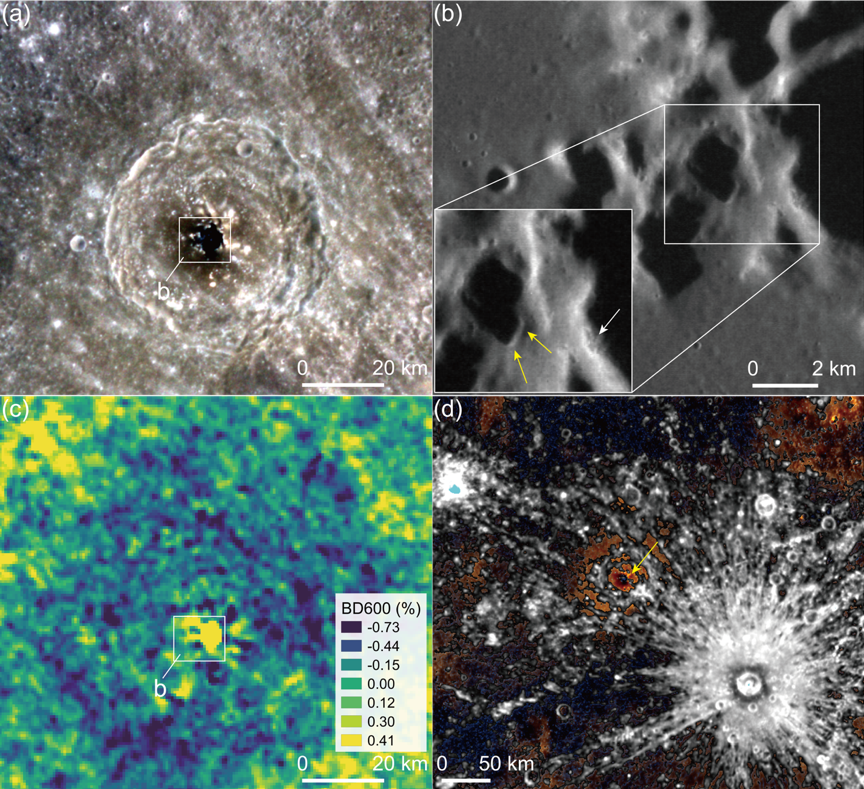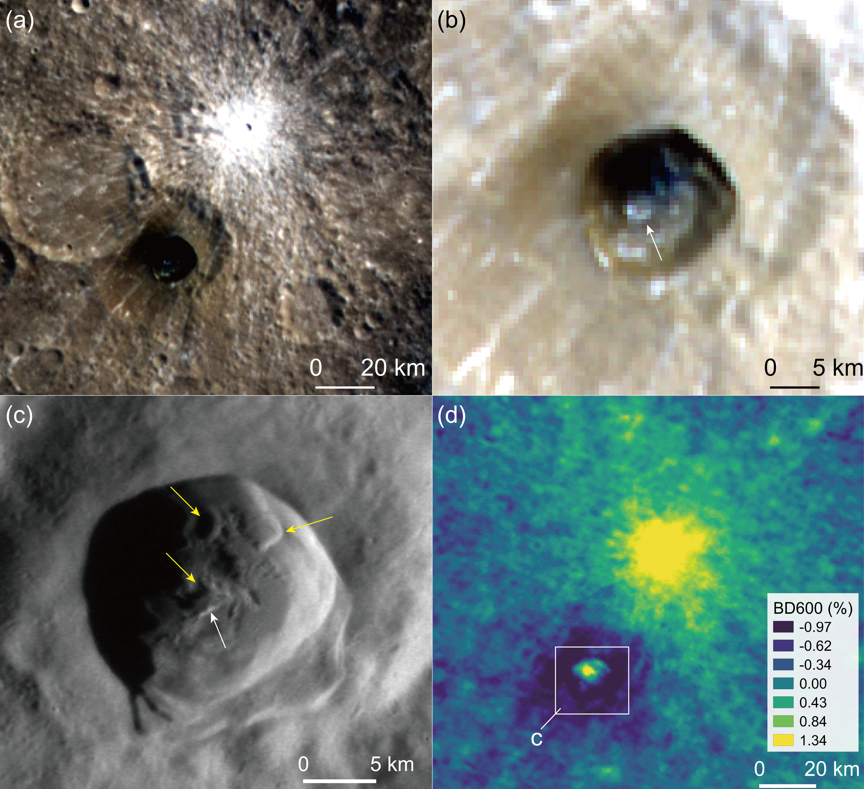Recent dark pyroclastic deposits on Mercury
Zhiyong Xiao1, 2* and Rui Xu3, Yichen Wang1, Yiren Chang3, Ru Xu1, Jun Cui1,2
1 Planetary Environmental and Astrobiological Research Laboratory, School of Atmospheric Sciences, Sun Yat‐sen University, Zhuhai, China
2 CAS Center for Excellence in Comparative Planetary, Hefei, China
3 State Key Laboratory of Lunar and Planetary Sciences, Macau University of Science and Technology, Macau, China
The prevailing explanation for the low reflectance of Mercury is graphite, which was possibly differentiated from a hypothesized magma ocean. Graphite is predicted to be stable in Mercury’s mantle, and oxidization of graphite may be a major source of volatiles that drove explosive volcanism on Mercury. Typical pyroclastic deposits on Mercury have higher and steeper reflectances than the global average, which were ascribed to the loss of graphite. For the first time, dark pyroclastic deposits are discovered on Mercury, appearing as low-reflectance and diffuse-edged thin cover around rimless depressions. We found two candidate dark pyroclastic deposits that were formed in Mercury's most recent history, and the eruption occurred along pre-existing crustal weaknesses. For one such case, an absorption feature attributable to graphite is visible in both the country rocks and diffuse pyroclastics, indicating that graphite in the magma was incompletely oxidized, or blasted country rocks that contain graphite exist in the pyroclastics. For another candidate, the graphite absorption feature is visible in the country rocks but absent in the pyroclastics. The pyroclastics have redder reflectance spectra, indicating metallic iron is the possible darkening phase. ~12.5% of recognized low-reflectance materials on Mercury does not exhibit a graphite absorption either.

Figure 1. Candidate Kuiperian-aged dark pyroclastic deposits (Case 1). (a) The dark materials are most obvious on the western floor, and the lowest reflectance is located at the southern central peak. Impact craters with bright impact rays are not visible in the dark materials. (b) Bright-haloed hollows are widespread in the central peak (e.g., white arrow), and illuminated brinks of small rimless pits are visible within the darkest part of the central peak (e.g., yellow arrows). (c) The dark materials exhibit a weak absorption at 600 nm (i.e., positive values of BD600), suggesting relative enhancement of graphite. This frame has the same extent as that of panel (a). (d) Rays formed by the Raden Saleh crater are not visible in the dark materials (yellow arrow). This image shows the ratio map of reflectances at 430 and 1000 nm (R430/R1000) on top of the enhanced color composite.

Figure 2. Candidate Kuiperian-aged dark pyroclastic deposits (Case 2). (a) Dark and diffuse materials are visible around the ~17 km diameter crater, and they are most obvious at the western rim. The dark materials postdate the fresh impact crater that is located to the northeast. (b) An enlarged view of the crater floor shows that materials in the center of the crater have a reflectance similar to that of bright-haloed hollows (white arrow). (c) Three rimless pits are visible in the darkest part of the low-reflectance material (yellow arrows). Potential but unconfirmed hollows may exist on the southern wall of the central pit as evidenced by their color (white arrow). (d) The candidate diffuse dark pyroclastic deposit exhibits BD600<0, suggesting a relative depletion of graphite. The center and northern wall of the host crater exhibit a weak absorption at 600 nm (i.e., BD600>0), suggesting a relative enrichment of graphite in the country rock of the potential volcanic pits.

